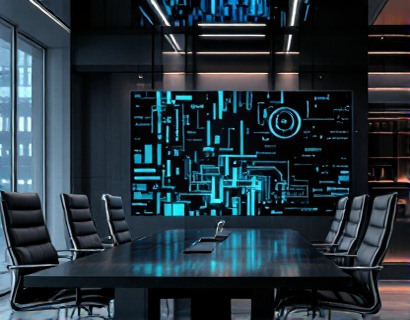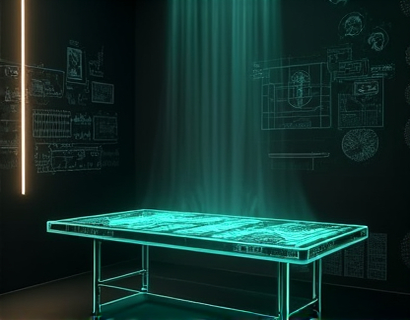Maximizing Architecture Firm Efficiency with Advanced Software Solutions
In the competitive landscape of architecture firms, efficiency and productivity are paramount. Advanced software solutions play a crucial role in streamlining internal processes and enhancing user experience, allowing architects to concentrate on their creative excellence. This article delves into the various ways technology can optimize project management, resource allocation, and client interactions, ultimately leading to improved overall performance and collaboration within architecture firms.
Streamlining Project Management
Effective project management is the backbone of any successful architecture firm. Advanced software solutions offer robust tools that simplify the planning, execution, and monitoring of projects. These platforms provide centralized dashboards where team members can track progress, manage timelines, and allocate resources with precision. By automating routine tasks such as scheduling and reporting, these tools reduce the likelihood of human error and free up valuable time for more strategic activities.
One key feature of these software solutions is the ability to integrate with other tools and systems used within the firm. For instance, seamless integration with CAD software, BIM tools, and ERP systems ensures a smooth workflow, minimizing the need for manual data entry and synchronization. This integration not only saves time but also ensures data consistency and accuracy across all stages of the project lifecycle.
Enhancing Resource Allocation
Optimizing resource allocation is critical for maintaining project timelines and budgets. Advanced software solutions provide sophisticated resource management capabilities that help firms allocate human and material resources more effectively. These tools allow managers to visualize resource availability, track utilization, and make informed decisions about staffing and material procurement.
For example, some software platforms offer predictive analytics that forecast resource needs based on historical data and current project requirements. This proactive approach helps firms avoid overstaffing or understaffing, ensuring that resources are used efficiently and costs are kept under control. Additionally, these tools can help identify bottlenecks and inefficiencies, enabling managers to take corrective actions promptly.
Improving Client Interactions
Client satisfaction is a key driver of success for architecture firms. Advanced software solutions enhance client interactions by providing secure, user-friendly portals for communication and collaboration. These portals allow clients to access project updates, view 3D models, and provide feedback in real-time, fostering a more transparent and collaborative relationship.
Moreover, these platforms often include features for managing client documents and communications, ensuring that all relevant information is easily accessible and well-organized. This not only improves the client experience but also reduces the administrative burden on the firm’s staff. By automating routine tasks such as sending reminders and notifications, firms can focus on delivering high-quality service and building long-term client relationships.
Boosting Collaboration and Communication
Collaboration is essential in architecture, where multiple stakeholders, including clients, engineers, and contractors, need to work together seamlessly. Advanced software solutions facilitate better communication and collaboration by providing shared workspaces and real-time collaboration tools. Team members can work on the same project simultaneously, regardless of their physical location, ensuring that everyone is on the same page.
These platforms often include chat and messaging features, video conferencing, and file-sharing capabilities, making it easier for team members to stay connected and productive. The ability to comment directly on design files and track changes in real-time further enhances the collaborative process, reducing misunderstandings and delays.
Enhancing User Experience
The user experience of software solutions is crucial for adoption and effectiveness. Advanced architecture software is designed with the end-user in mind, offering intuitive interfaces and user-friendly features. This ensures that team members can quickly learn and utilize the tools without extensive training, maximizing productivity from the outset.
Customization options are also a key aspect of these solutions. Firms can tailor the software to fit their specific workflows and requirements, ensuring that the tools align with their unique needs. This flexibility not only improves user satisfaction but also increases the overall efficiency of the firm.
Data Security and Compliance
With the increasing amount of sensitive data being handled by architecture firms, data security and compliance are top priorities. Advanced software solutions come with robust security features, including encryption, access controls, and regular security updates. These measures protect client data and firm assets from unauthorized access and cyber threats.
Additionally, these platforms are designed to comply with industry standards and regulations, such as GDPR and LEED. Compliance ensures that firms can operate without legal risks and maintain the trust of their clients and partners. By choosing software that prioritizes security and compliance, architecture firms can focus on their core activities with peace of mind.
Cost Efficiency and Scalability
Investing in advanced software solutions can lead to significant cost savings in the long run. By automating routine tasks and optimizing resource allocation, firms can reduce labor costs and minimize waste. The initial investment in these tools is often offset by the increased efficiency and productivity they bring.
Moreover, many software solutions are scalable, allowing firms to grow their operations without the need for extensive reconfiguration. As the firm expands, the software can adapt to handle larger projects and more complex workflows, ensuring that the firm remains efficient and competitive.
Case Studies and Success Stories
Several architecture firms have successfully implemented advanced software solutions, resulting in notable improvements in efficiency and client satisfaction. For instance, a mid-sized firm in New York reported a 30% reduction in project delivery time after adopting a comprehensive project management platform. The firm’s managers attributed this success to the tool’s ability to streamline workflows and enhance collaboration among team members.
Another example is a large international firm that utilized a cloud-based BIM solution to manage multiple projects across different locations. The firm experienced a 25% decrease in errors and rework, leading to significant cost savings and improved client satisfaction. The real-time collaboration features of the software played a crucial role in aligning the efforts of distributed teams.
Conclusion
In conclusion, advanced software solutions offer architecture firms a powerful means to maximize efficiency, streamline management, and enhance user experience. By leveraging these tools, firms can focus more on creative excellence while ensuring that project management, resource allocation, and client interactions are optimized for success. As the industry continues to evolve, embracing technology will be essential for staying competitive and delivering high-quality results.










































